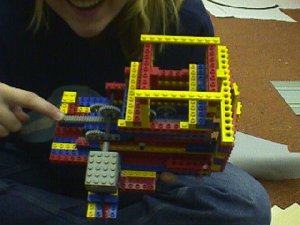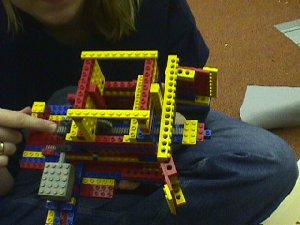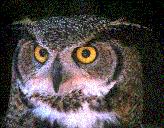![]()
![]()
We're not sure how we came up with this idea - we fawning over craft store birdies when all of a sudden we were like, "wouldn't it be cool to make a cuckoo clock?!" It seemed feasible yet challenging, as it would require a few motors, a handyboard, a cricket, some sensors, gearing, tracking, a little artwork, and some crafty code.
Architecture
We planned on constructing the clock in three parts.
The highest and most important part is Billy Joe Bob, the owl that pops out of his hiding place at the hour. We achieved this effect with tracks, which uses the simple rotational movement of a motor to form straight back and forth motions. Another cool thing that we made Billy Joe Bob do is pop out a multiple number of times, depending on which hour the little hand was on. For example, when the Wellesley Cuckoo clock strikes 3, you see Billy Joe Bob three times! Wow!
One tier lower is a clock with two hands, the larger of which triggers sensors as it passes 12 and 6 o'clock. The hands of the clock are controlled by two different sets of gears, one for the faster big hand, and another for the slower small hand. These gears form a long gear train. After a few days, we had a neat idea: the torque ratios should be 1:12 (big hand to little hand), so that relative to each other, the hands would tell real time!
The lowest part consists of two smaller tracks, on which some other nifty creatures reside. They work just like the track that Billy Joe Bob is on, except they always pop out twice at the half-hour.
Here's a cool set of photos that show how our track works (except my finger is working as the motor here):


What now?
Learn about the symbolism behind the Wellesley Cuckoo Clock.
Look at the code we used.
See the final project.
Go back to the home page.
Created by: Carrie Ryan
Date created: January 24, 2000
Last Modified: January 25, 2000
